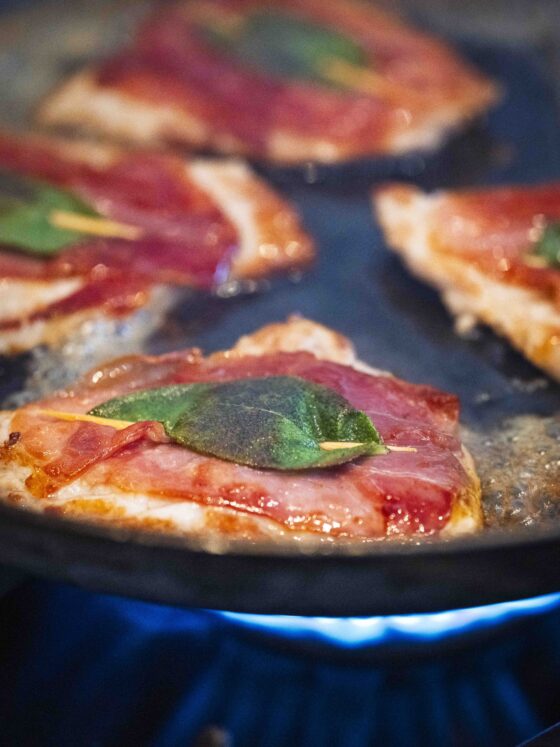Saltimbocca alla Romana: simplicity Italian style
When I first tried saltimbocca, I wasn't impressed. It looked more like a rushed lunch than a classic Italian dish: a pale piece of meat, a slice of ham, a stray sage leaf. I wasn't sure at first.
But as soon as I took a bite, I knew this dish was as good as its name suggests. Saltimbocca is a dish that really packs a punch. The buttery flavour of the veal, the salty prosciutto, the spicy freshness of the sage... so much flavour, so much finesse. And you only need three ingredients.
When I was in Italy last, I looked into where this Roman pride comes from – or is it actually a Brescian discovery? The culinary history is divided, but one thing's for sure: saltimbocca is a dish that's won over hearts (and stomachs) for generations.
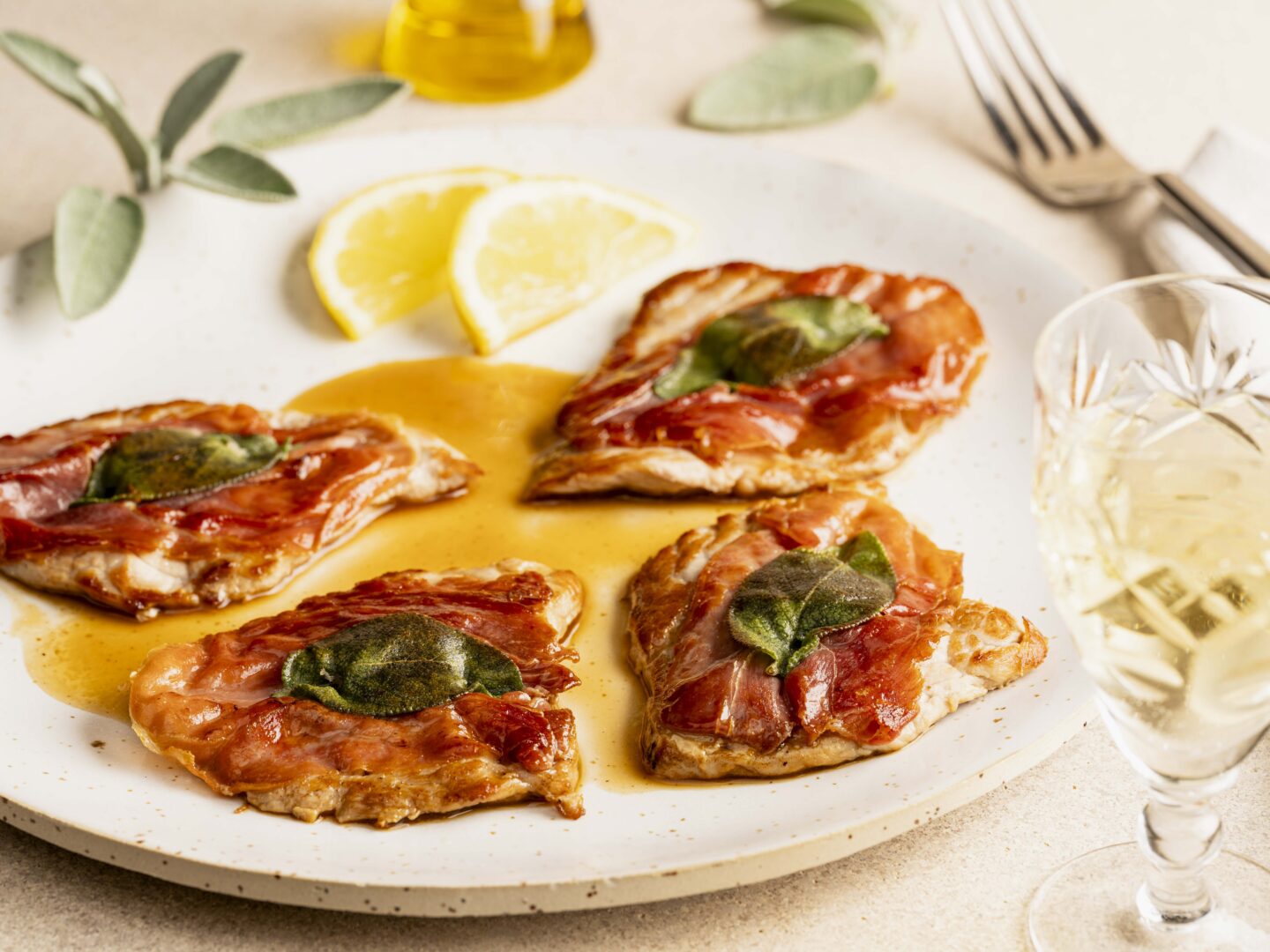
Where does saltimbocca come from?
No one really knows where saltimbocca alla Romana came from. Pellegrino Artusi, the famous author of the culinary classic La Scienza in Cucina e l'Arte di Mangiar Bene, discovered the dish in a Roman trattoria and was immediately sold. For him, it was obvious: this was Rome on a plate.
But not everyone agreed with him. Back in 1930, Ada Boni wrote in her La Cucina Romana that saltimbocca actually comes from Brescia, in Lombardy. It was already in cookbooks before Artusi's time. Was it all about rivalry, or was she actually right? We'll never know for sure. Either way, saltimbocca is a dish that embodies Italy in all its simplicity.
What exactly is saltimbocca?
The idea is simple: a thin slice of veal, a slice of prosciutto, a sage leaf. Just skewer it with a toothpick and fry it briefly in butter. Serve it as a secondo, which is the meat dish that follows the pasta. But as with many Italian classics, it's the little things that make the difference.
The right type of meat
For a proper saltimbocca, use veal – best in the scaloppine cut, thinly sliced across the grain. Just ask your butcher for this. Are the slices too thick? No worries, just flatten them between two sheets of baking paper with a meat tenderiser or rolling pin. And don't forget to remove the membranes, otherwise the meat will be tough.
The art of pan-frying meat
This is what makes or breaks your dish. Here are a few golden rules:
- Just use a normal frying pan, not one with a non-stick coating – you want a nice brown colour.
- Get the pan nice and hot. This will seal the meat and keep it juicy.
- Start with the prosciutto and sage side down. This way, they'll flavour the fat.
- Just give it a quick fry, otherwise the prosciutto might get tough.
- Make sure you put the sage on top of the prosciutto, not in between - this will make it crispy and aromatic.
- Don't use too much salt – the prosciutto will do the trick. Just a twist of freshly ground pepper is enough.
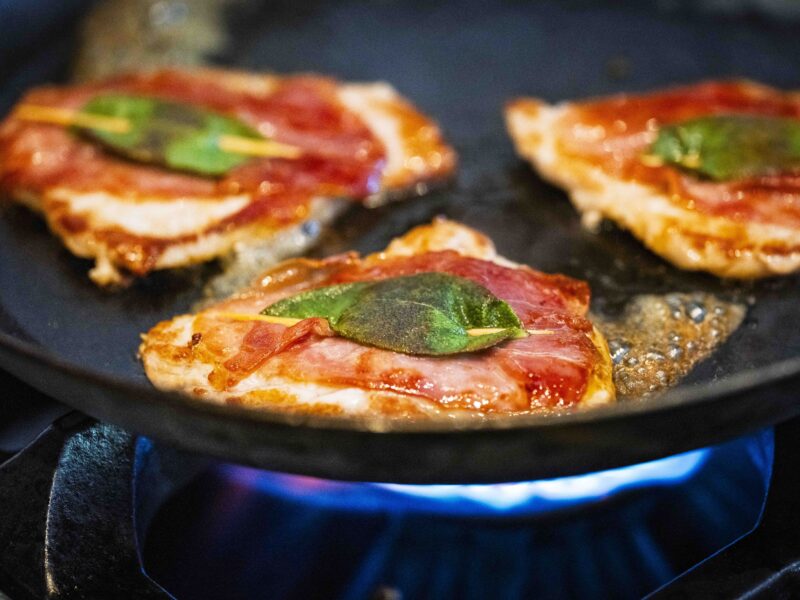
White wine or not?
The oldest versions of saltimbocca alla Romana don't contain any wine at all. But that doesn't mean a dash of white wine wouldn't do the dish some good – quite the opposite, in fact. A dry white wine will give the sauce that little bit of extra depth. You can also deglaze with water, but then you miss out on the subtle acidity that rounds off the flavours nicely.
There are two main ideas on when to add the wine. You leave the meat in the pan while you add the wine, so that it simmers in the sauce. This makes the meat more flavourful, but there's a chance it might get overcooked and lose its juiciness. The other – and this is my preference – is to remove the meat from the pan first. This lets it rest, and you can deglaze the pan without drying out the meat. The result? A light, flavourful gravy and a perfectly cooked piece of veal.
With or without flour?
It might seem like a small thing, but it can make a big difference: should you dust the meat with flour or not? Some chefs swear by it. A thin layer of flour helps to bind the sauce. But there are a few things to bear in mind.
If you use flour, just dust the side without the prosciutto. Why? The flour under the slice of ham will stay there during frying. It doesn't cook and leaves a floury taste. Also, be careful with the amount of liquid you add: the flour thickens the sauce faster, so top up with a little more wine or water to avoid a mushy sauce.
Variations on a classic
Veal is the usual choice, but you can also try pork tenderloin, beef or turkey. Chicken is not really an option in Italy, to be honest. You can replace the prosciutto with speck for a smoky touch. And if you like cheese, just slide a thin slice of provolone or mozzarella between the meat and ham. Fontina goes really well with speck.
If you want to make the sauce even better, you can add a spoonful of capers or some finely chopped onion. Just remember to keep it simple.
Try different forms
Why not try making involtini? Just roll up the meat with the ham and sage inside. It takes a little more work, but the result is extra juicy. Or you could cut up some smaller pieces of veal and serve them as appetisers. They look and taste great and will definitely surprise your guests.
What do you serve with saltimbocca alla Romana?
Saltimbocca is rich in itself – butter, prosciutto, meat, sage – so whatever you serve with it should complement rather than overpower it.
Vegetables are a classic accompaniment. Picture tender green beans or sweet peas with a touch of mint. Why not try a fresh rocket salad with lemon dressing and some Parmesan? Or maybe braised fennel, grilled courgette, roasted cauliflower with lemon and capers, or a lukewarm lentil salad with shallots and parsley?
Potatoes are always a safe bet. Boiled and served with parsley and a dash of olive oil, or mashed with a bit of nutmeg and cream. Looking for something with a bit more rustic charm? Why not try roasted potatoes with thyme?
Polenta is also a great option, especially if you go for a soft, creamy one with a knob of butter and some grated Parmesan. For an extra twist, let the polenta set, cut it into slices and grill briefly – crispy on the outside, soft on the inside.
Even a piece of focaccia to mop up the juices is enough – because trust me, you won't want to leave any behind.
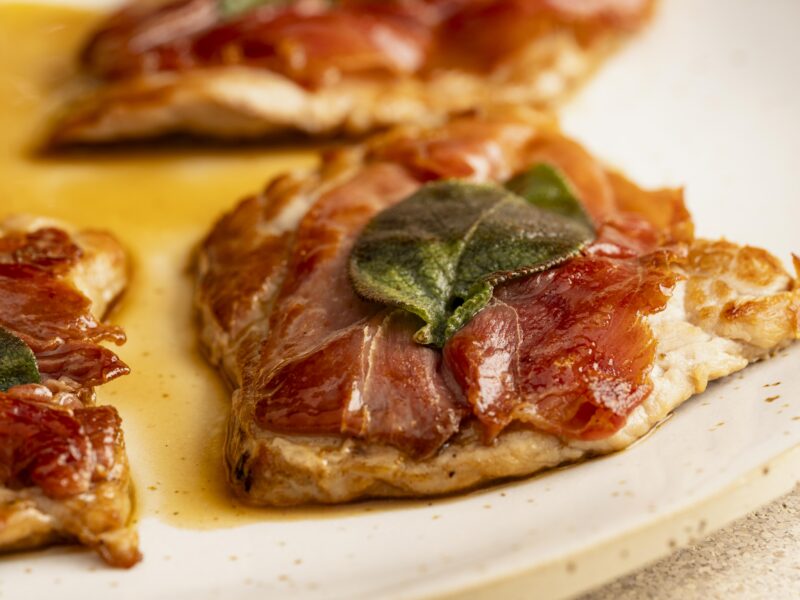
An ode to sage
Sage isn't everyone's cup of tea. It's strong but also kind of bitter, with a bit of a camphor flavour that you either love or hate. But when you get the balance right, it can take your dish to the next level.
Fresh sage is way tastier than the dried kind, with a kind of citrusy flavour. It's actually really versatile: you can try it with roasted pumpkin, in a butter sauce with gnocchi, or fried as a crispy topping on risotto. It goes really well with ingredients like cannellini beans, braised onions, tomatoes, bacon and, of course, prosciutto.
But sage is more than just a flavouring. The name comes from the Latin word for "salvia", which means "to save" – and that says a lot about this herb's reputation. Back in the Middle Ages, it was a staple in every monastery garden, where it was really valuable for its medicinal properties. Even today, sage is valued for its healing qualities.
Sage is great for digestion, has anti-inflammatory and antibacterial properties, and helps with sore throats and colds. It balances body heat, supports hormonal balance in women and is even considered a tonic for the nervous system. And we all know that sage is great for purifying the air and atmosphere.
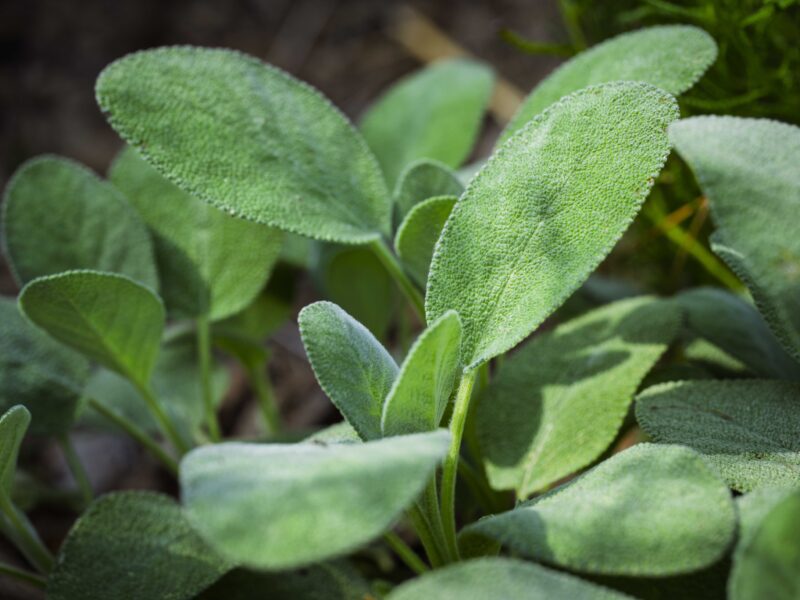
Recipe: Saltimbocca alla Romana
Ingredients for 4 people:
- 400 g veal scaloppine (8 pieces)
- 150 g prosciutto
- 8 sage leaves
- 8 toothpicks
- 50 g butter
- 75 g dry white wine
- Freshly ground pepper
-
Step 1: Preparation
Place the veal scaloppine on a chopping board. If they are too thick, gently flatten them with a meat tenderiser or rolling pin. Remove any membranes so that the meat remains tender.
-
Step 2: Filling
Place a slice of prosciutto and a sage leaf on each piece of meat. Secure everything firmly with a toothpick.
-
Step 3: Frying
Heat half of the butter in a regular frying pan (not non-stick) until it foams and begins to brown slightly. Place the slices in the pan with the prosciutto side down. Fry briefly and vigorously – about 1 to 2 minutes per side. The ham should not become tough; the meat should be just cooked through. Remove the meat from the pan and keep it warm under foil.
![Saltimboca 20]()
-
Step 4: Deglazing
Deglaze the pan with the white wine and stir well to loosen any brown bits. Allow the sauce to reduce for a few minutes. Reduce the heat to low and add the remaining butter in small knobs. Stir them into the gravy one by one until you have a shiny, creamy sauce.
-
Step 5: Serving
Place the saltimbocca on warm plates, spoon some of the sauce over them and finish with a twist of freshly ground pepper.
Serve with creamy polenta, a fresh rocket salad or roasted fennel. And don't forget a piece of bread to mop up your plate.
![Saltimboca 10]()
